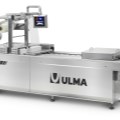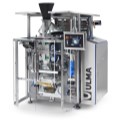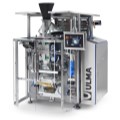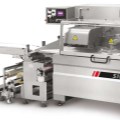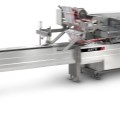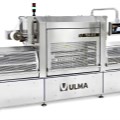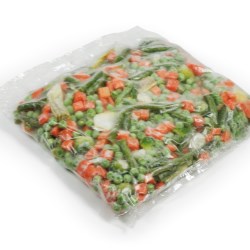If this is your company, CONTACT US to activate Packbase™ software to build your portal.


Retailers and poultry suppliers are under increasing pressure to reduce the risk of harmful bacteria to consumers following concerns over campylobacter, the most common cause of food poisoning affecting around 280,000 people in the UK alone each year, usually found on raw or under-cooked poultry.
One solution for countering the campylobacter bug is cook-in-the-bag packaging for whole birds which eliminates the need for the raw product to be handled. It is also extremely convenient for the consumer as the whole chicken can go straight into the oven from the shelf.
ULMA Packaging Ltd was engaged by a major supplier of high quality fresh chicken to deliver flowrapping and tray sealing equipment for the new ovenable packs required by a major high street supermarket for a variety of products.
The poultry company has an extremely high production throughput of different sized and weights of whole birds which required ULMA, one of the UK’s leading suppliers of packaging equipment and automation for the whole fresh bird wrapping market, to provide a flexible, cost-effective, high value cook-in-the-bag solution for fresh whole chicken in materials specified by the customer.
ULMA supplied two horizontal flowrapper Artic Quad machines to create Polyester Ovenable Material or Barrier Laminate Material in quad and pillow pack formats with complete modified atmosphere packaging (MAP) for extended shelf-life. The Artic Quad’s high speed long dwell sealing head, characterised by an ‘oval’ motion profile in the jaw, assures perfectly hermetically sealed packs at high production speeds.
Once the chicken is wrapped, with or without a tray, the machine profiles and seals film on four corners for a box-like effect, adding value for suppliers by allowing printing on four sides of the pack and increasing the visibility of the product to shoppers. The strength of the hermetic seal created by the Artic Quad flowrapper protects the integrity of the bag, keeping juices from seeping out and contaminating surfaces and other products.
In addition to the Artic Quad flowrapper, ULMA also supplied the poultry processor with two of its latest tray-sealing application, the TSA680, which can be integrated into complete lines for all types of trays and different printed top film materials, and a new high performance VTI540 Vertical Bagging machine.
This packaging portfolio helped the client future proof its production needs and meet customer specification, while the spin off for consumers and their health is good kitchen practice as they can pop the chicken, which is sealed in pillow pack style packaging, into the oven for cooking, which kills off any bugs present, without ever having to handle the raw poultry.
Simon Millar, ULMA’s business manager machine sales, said: “The bottom line is that consumers don’t have to touch the product, which reduces the risk of campylobacter. You literally put the bird into the packaging machine for sealing and the material wrapped around the chicken has a receptive element to it for the consumer to cook it in the bag.”
Innovative flow wrapping and tray sealing technology – backed up by a complete spares and service support back-up – offers the poultry industry equipment and fully integrated solutions that are highly productive and efficient to meet the growing demand from retailers for exceptional packaging hygiene, extended shelf life, great commercial visibility and speed to market.




